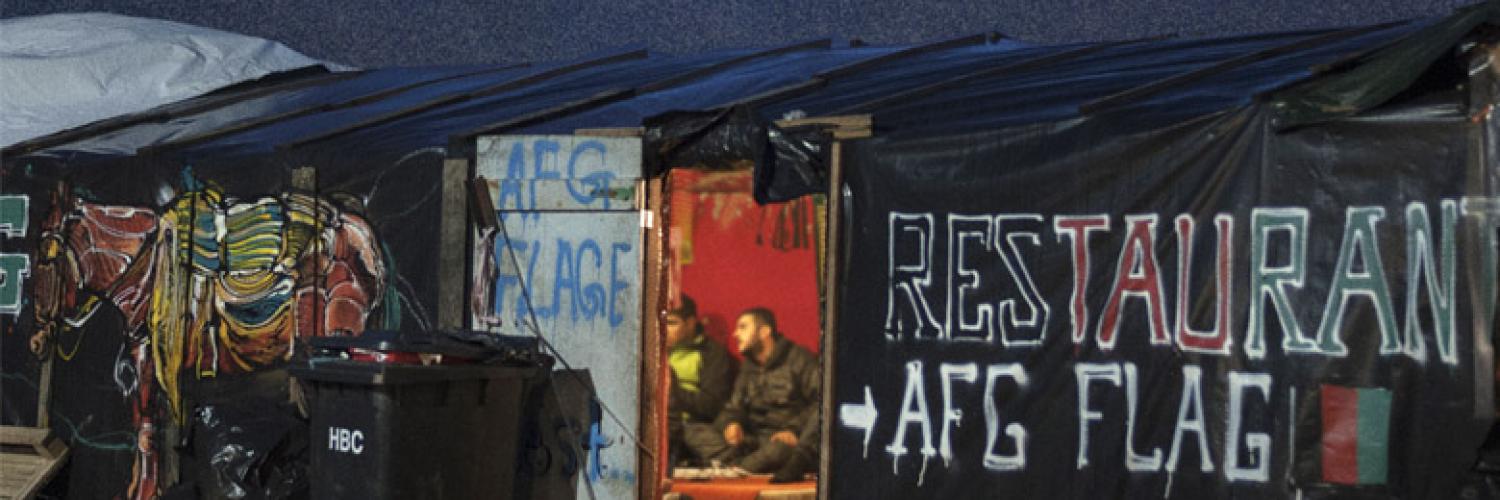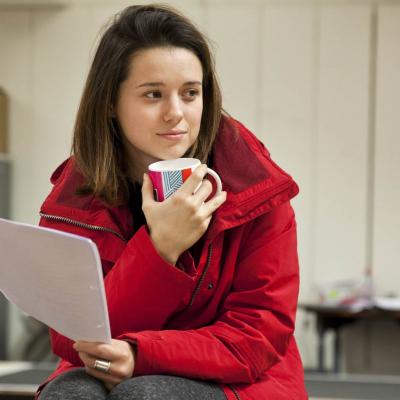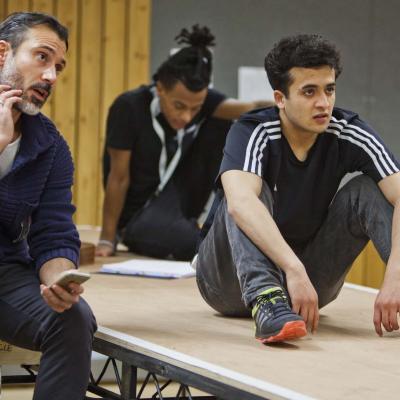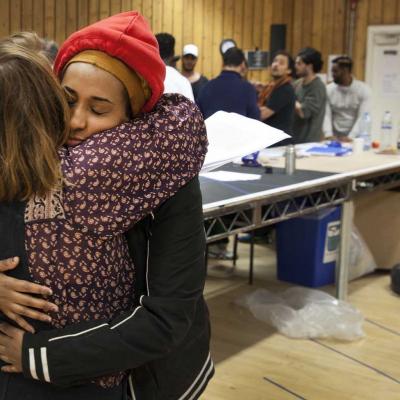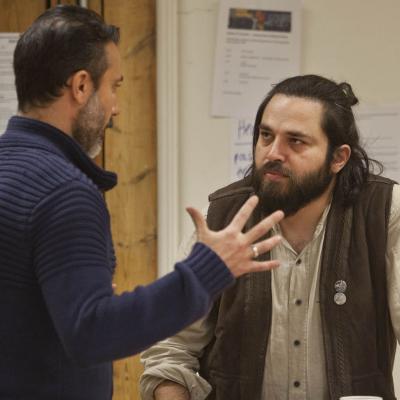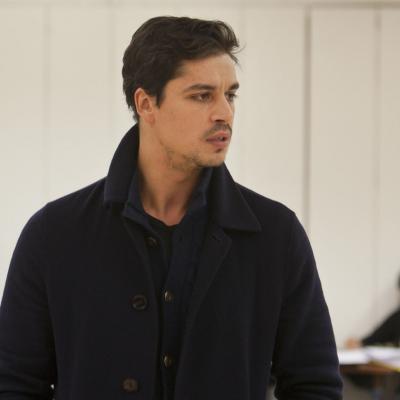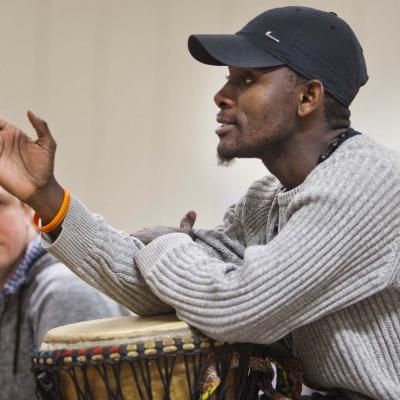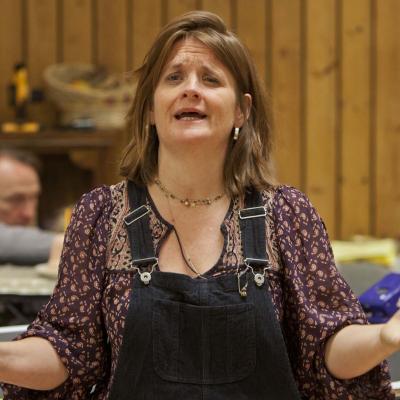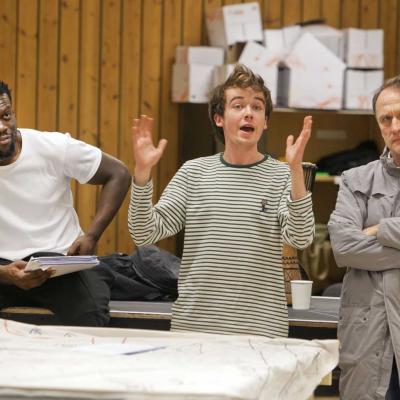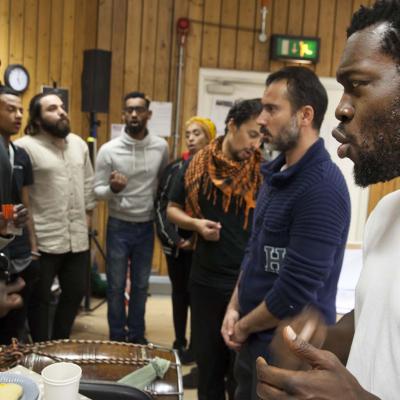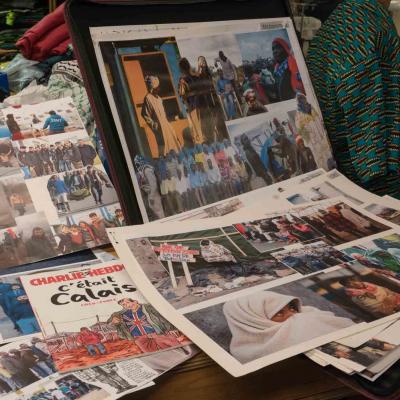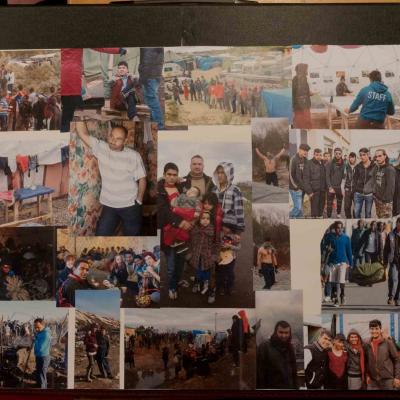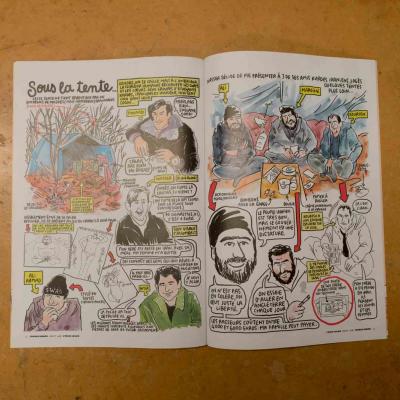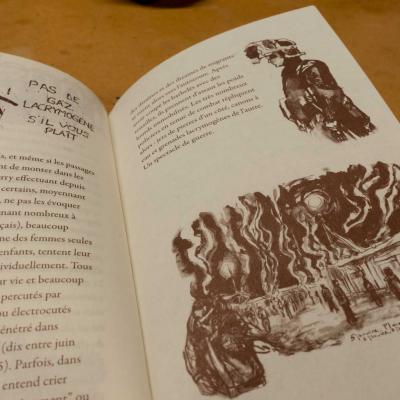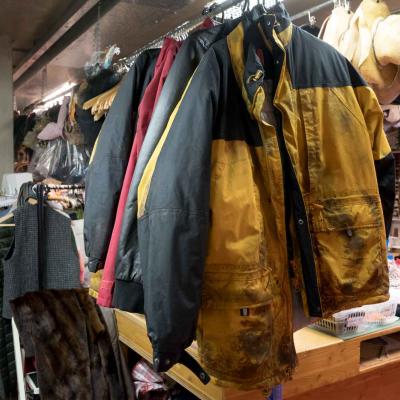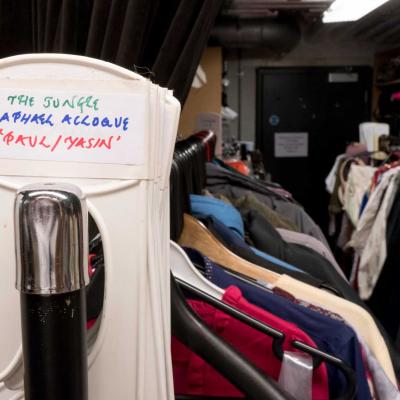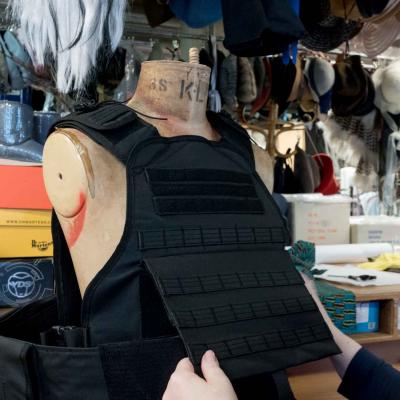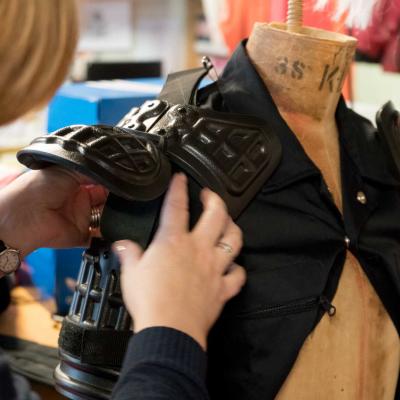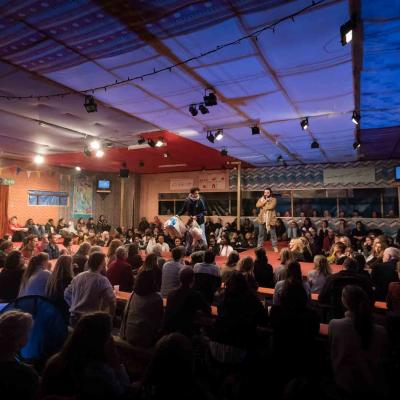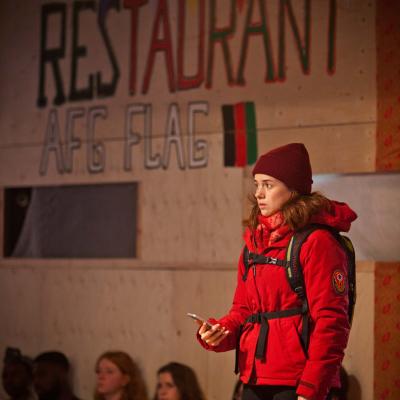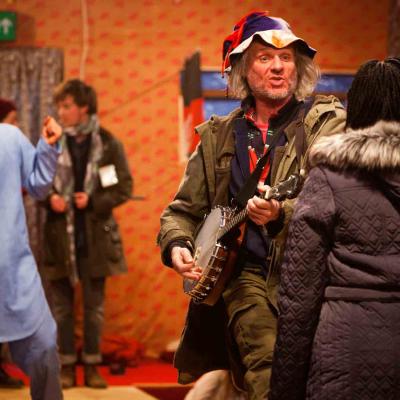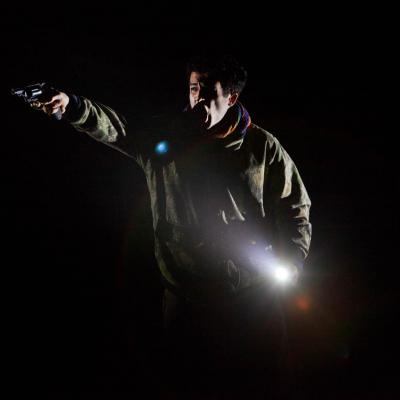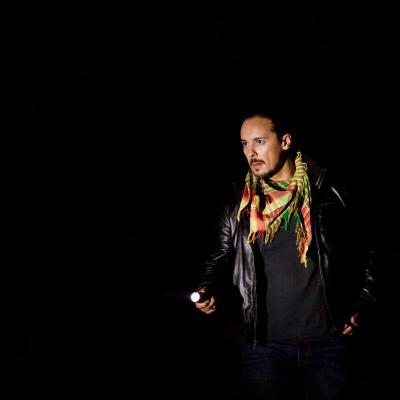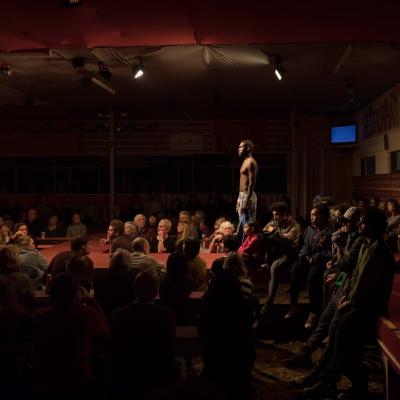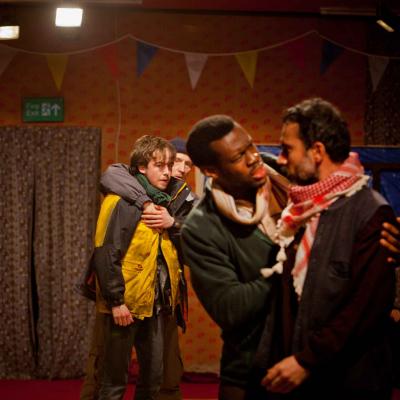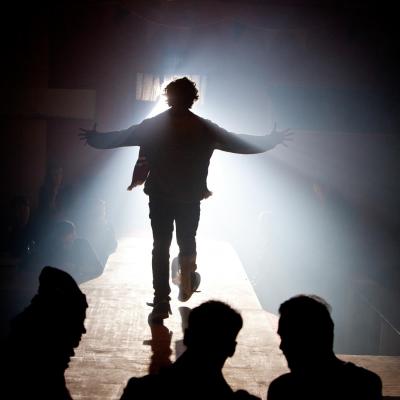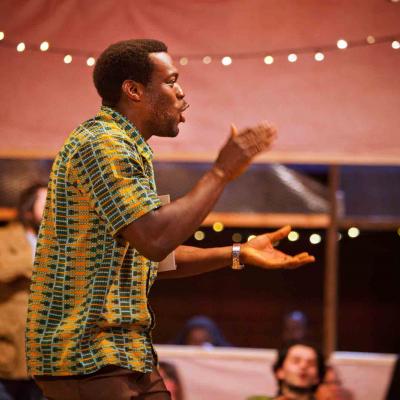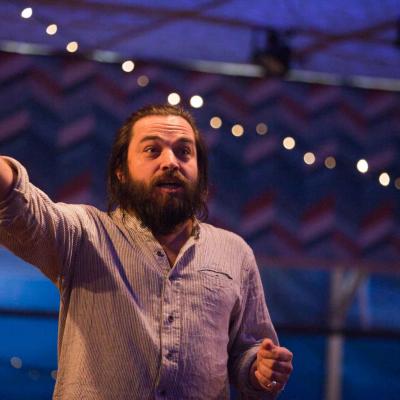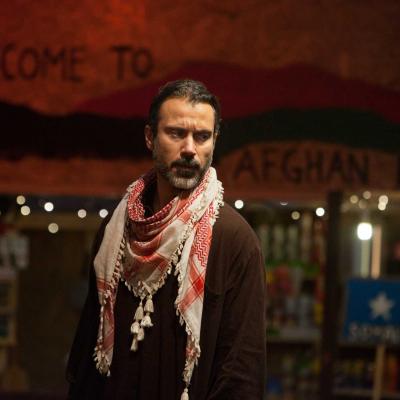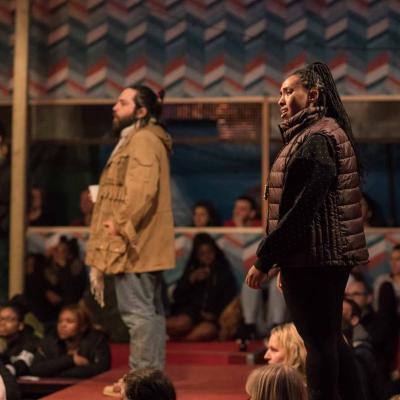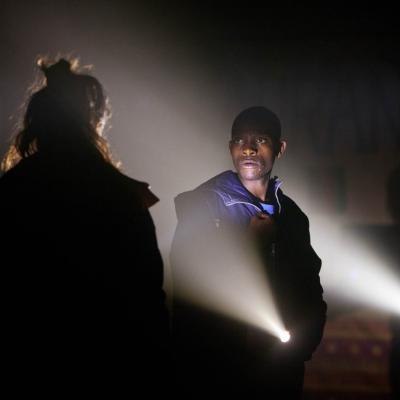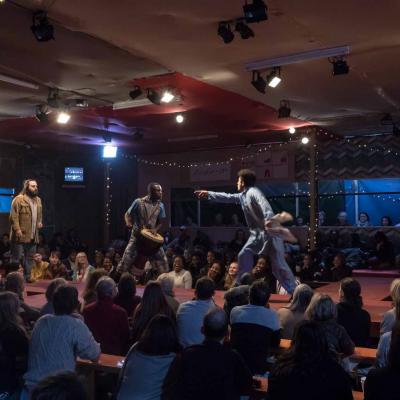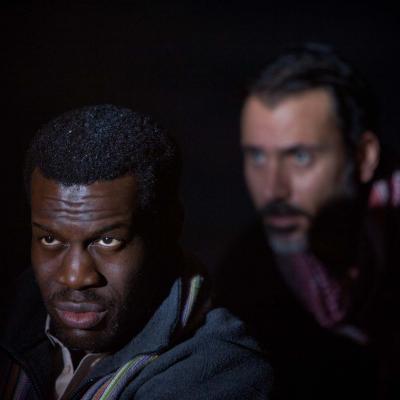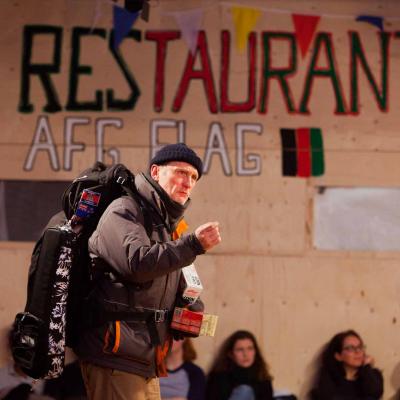Inside The Jungle
Inside The Jungle is our new educational resource pack designed to give you an insight into how our production came to life. We've broken down the production into sections to help you understand how different elements come together to form what you experience at the Young Vic, from the original idea and the people behind the script to the creatives and production teams who work tirelessly to put the work on the Young Vic stage.
This is the first iteration of our new resource packs and we'd love to hear your feedback as to how useful each section is for your school class or youth group. We've looked to reimagine our original education packs into something more interactive for class and individual learning. Email learning@youngvic.org with any feedback and we'll work it into our future resource packs.
----------
This is the place people suffered and dreamed.
Okot wants nothing more than to get to the UK. Beth wants nothing more than to help him. Meet the hopeful, resilient residents of “The Jungle”– just across the Channel, right on our doorstep. Join refugees and volunteers from around the world over fresh baked naan and sweet milky chai at the Afghan Café. From Good Chance Theatre, a new play where worlds collide. In the worst places, you meet the best people.
Find out more about the YV, National Theatre and Good Chance Theatre co-production on our production page.
Good Chance Theatre
Find out more about Good Chance Theatre and the Young Vic
ToggleThe relationship between Good Chance Theatre and the Young Vic started in the mud. Piles of rubbish, make shift streets overflowing with refuse and human waste, tents, shacks and shops, and a bright white dome. The refugee camp in Calais known as "the jungle" is a place simultaneously full and devoid of hope. It was keeping this hope alive, giving people a chance to express themselves: to dream again, which playwrights Joe Murphy and Joe Robertson wanted to foster when they decided to build a theatre in the bleakest of places.
Joe and Joe raised some funds and erected the tent in an unoccupied area of the camp. Several weeks and many drama games later the dome had to be taken down and put up in a new area, when French authorities decided they wanted the space to build accommodation for some of the residents. By now the dome was starting to become a place of gathering. Some of the residents turned up daily, to chat in a place that was warmer, and dry, to swap stories, to take part in things which were happening inside. Moving the theatre broke that momentum, plunging it into a new neighbourhood and literally re-locating the community which had built up around it. Several volunteers travelled out to help get Good Chance’s newly located theatre re-established, some from other UK theatres, some individuals, and four people from the Young Vic’s Taking Part and Directors Program who spent time running workshops and doing outreach around the camp.
The ties knotted in the bleakest of places remained strong, with the Young Vic offering meeting space, administrative and press support to Good Chance. When the jungle was all but demolished in November 2016 and the dome taken down for the last time, it was a natural progression for Good Chance Theatre to make their home at the Young Vic as an associate company. The values of the two theatre companies have always been aligned: the belief that theatre can ignite hope, provide respite, and give people a chance to feel human. The relationship will continue until such time when it is no longer needed: from Calais to London, from mud to bricks.
Good Chance Theatre in Calais
Meet the Writers
The Humans of Calais
Listen to refugees living in Calais sharing their story through films created by Tomo Brody with the support of On Our Radar.
The people are children who have lost their parents, women who have brought their children to safety and men who have known imprisonment and torture. These are the words which the men, women and children in refugee camps in Calais want us to hear. Find out more about the project and watch more interviews at Humans After All and On Our Radar.
Rehearsal Diary
by The Jungle Jerwood Assistant Director, Nicole Charles
ToggleNicole Charles is the Jerwood Assistant Director on The Jungle. As part of her role in the production she keeps a diary of some of the key moments which happen throughout rehearsals. Nicole kindly shared an excerpt from her diary about the first day of rehearsals.
After the meet and greet, we dived straight into the text from the off. No read-through, no discussing or text work around a table. Straight onto the mock set.
There was sense of fearlessly crashing in, and I imagine was probably the result of a number of extended research and development workshops having taken place in the 18 months prior to rehearsals commencing. It is a rather gargantuan project in many respects, a cast of 18 actors, the first ever co-production between the Young Vic and the National Theatre, the first play written by the Joe’s (Murphy and Robertson), co-Artistic Directors of Good Chance Theatre, and a co-directed play, and all of these elements will no doubt bring their own merits and challenges.
We worked through the first scene, tackling problems as they arose. The ‘problems’ that we tackled were either logistical, physical, textual and dramaturgical issues. If anything didn’t serve the aim of the scene, it was cut or changed, either by Stephen, Justin (the directors) or the writers.
It is a very dynamic and creative space. Everyone pitches in to solve the problems and everyone’s voice is heard. It is a fiercely collaborative, and in some ways, anarchic process, which enables the performers, stage management, costume designers and anyone else in the room to co-create the work. By the end of day 1, we had staged the entirety of The Judgement/Scene 1. I’m not sure I had ever been in a rehearsal process in which we had staged a scene so early on. Issues were dealt with surprising deftness and alacrity. It was dazzling.
Costume Design
by The Jungle Costume designer, Catherine Kodicek
ToggleCostume is a discipline that expands and contracts to suit the artistic needs of the show. Costume can create spectacle, excitement or harmony. Costume can be used by designers to create beautiful living pictures onstage and can also draw attention to certain characters and moments, it can be naturalistic or fantastic, it can be contemporary or historical.
Costume is a tool to communicate character. This is often truer in contemporary costume design. Every person makes a choice about their clothing. Even when a person has no choices or believes that they are indifferent to their clothes, that lack of choice communicates something about that person to the outside world.
In “Jungle”, we are seeking to tell a truthful contemporary story in a naturalistic setting. So in addition to amplifying the actors’ performance of their character, we are also showing the circumstances of the characters life, the constraints on their choices, their environment and the passing of time.
Certain elements of the design were simple. There are a large number of images of the Calais migrants’ camp in news stories and blogs on the internet. I also had access to the personal photos of many of the people who have volunteered there. The writers based many of the characters on people they had got to know well, so talking about these early characters enabled me to start digging in to their backgrounds. All of the people at the camp have made a journey, whether from Eritrea or Maidstone and it was important to me to know what their life was like before they ended up in Calais. I researched the countries of origin for many of the characters and slowly started to build up a number of images for each character; what they may have worn before, what they may have travelled in, what they may have acquired through donations at the distribution points in the camp. To more easily communicate these ideas to the Directors and Writers and the actors I created a series of mood boards. Some of these images are photos taken by the writers, some are from images in the media and some are from the many books I acquired about each of the countries represented in the play; Sudan, Afghanistan, Eritrea, Syria, Iran, Iraq and France.
A new play is a continuously evolving thing. As the actors take hold of the characters they morph and change and new facts about their backstory emerge. All of these inform the costumes so I decided to leave costume fittings until much later in the rehearsal process to allow the actors to fully know their characters by the time we were trying on clothes. There were select rehearsal costumes available to the actors, the mood boards were on the walls of the rehearsal room and I spoke with each actor about them, and the initial ideas about why I had chosen those images in particular. A lot of the designing was realised in the fittings with a large amount of input from the actors. Having some actors who were themselves refugees who lived in the Jungle provided invaluable information about the traditional elements of the costumes.
Then I took into consideration the action and timeline of the play and the environmental factors. There is mud, there is rain, there is a fire, characters’ are working outside in all weathers and sleeping in tents. The clothes need to reflect all of these circumstances. This is where the trickery of theatre helps; in order to show the gradual dirtying of the volunteers jackets we purchased multiple versions and broke them down to look older and dirtier in stages. I call these invisible costume changes because to the audience the character has not changed their clothes at all they are just getting dirty, but to the actor these are micro changes happening throughout the show.
And throughout this process running under it like a generator was the knowledge that each of these characters is a person, an individual with a sense of their own style. It was important to reflect the idiosyncratic choices that people living in the camp made when choosing their clothing. There is a line in the play “ When you don’t have enough of anything, you make from nothing” Being stateless or homeless did not diminish the residents capacity for self- expression. Clothing as character, clothing as a source of pleasure, clothing to express yourself to your fellow human is true for all people and the same was true of the residents of the “Jungle”.
Set Build
Behind the Scenes
The Jungle cast member Ammar Haj Ahmad took over the YV instagram giving us a look behind the scenes of the production's final week of rehearsals.
Reviews
★★★★★ "Exuberant, full of music and movement. This is a story we need to hear. It feels of national significance." Time Out
★★★★★ "This devastating, uplifting show celebrates the human capacity to build something out of nothing, to work together and try to make a difference." The Guardian
★★★★ "You’re left awed and appalled by the testimonies of the ordeals endured. It’s warts and all – and that’s the beauty of it." The Telegraph
★★★★ "Urgency, vividness and wit. The play’s sense of the knottiness of world politics makes this a remarkable evening." The Times
Thanks for reading our new resource pack.
We'd love to hear what you think
ToggleThis is the first iteration of our new resource packs and we'd love to hear your feedback as to how useful each section is for your school class or youth group. We've looked to reimagine our original education packs into something more interactive for class and individual learning. Email learning@youngvic.org with any feedback and we'll work it into our future resource packs.
